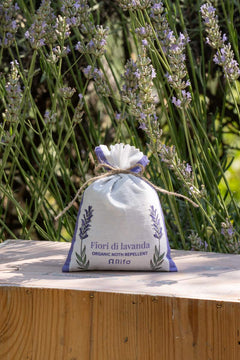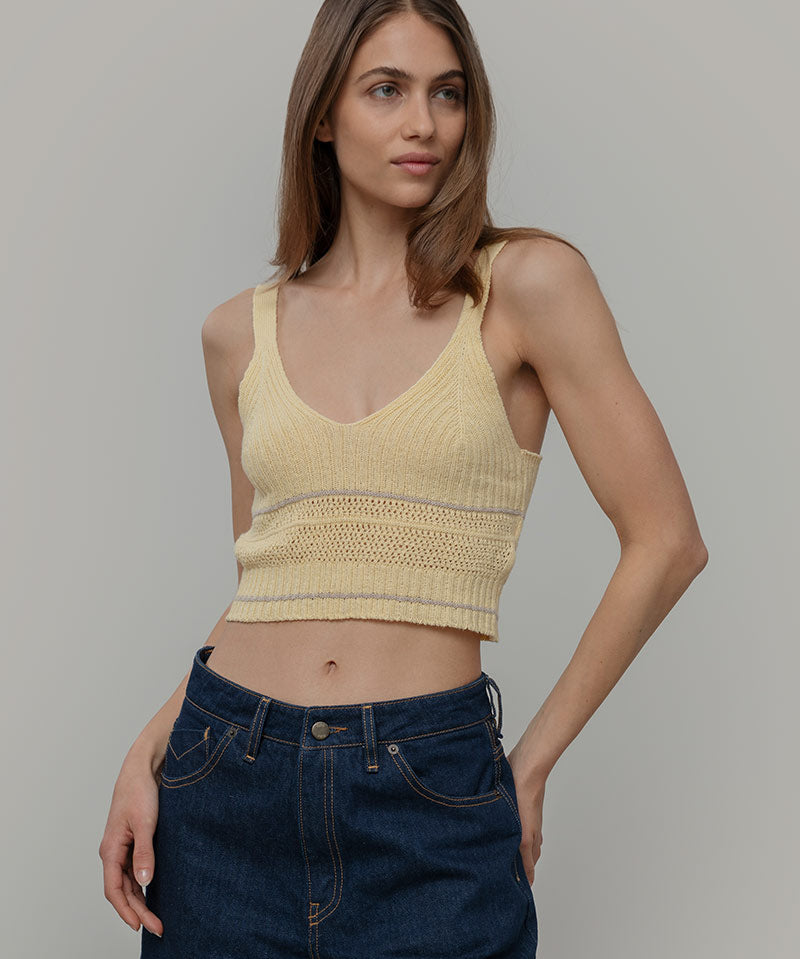With consciousness of damages and impact of fast fashion comes the awareness of a before and after in our consumption habits. Very often, this after is marked by a practice that has become increasingly common in our daily lives: reading the composition label.
In recent years, the attention paid to the quality of the materials used in clothing has grown, not just to understand our garments’ origin and impact, but also because these details usually give us valuable insights into their worth.
For instance, the benefits of clothing made of natural fibers and having a pure composition go beyond just being recyclable, even though we may sometimes take this for granted.
There are many reasons why choosing natural fibers and pure compositions—ranging from 100% to 95% of one material—has its advantages. In this blog post, we'll discover them all.
Natural fibers and pure composition - is it the same?
First, what do we mean by natural fibers? What are the differences between natural and synthetic textiles?
Natural fibers are those of animal or plant origin. The fact that they were not created through synthesis of artificial chemicals makes them biodegradable and environmentally friendly, even taking into account their production processes.
However, this does not mean that natural textile fibers always equal pure compositions.
What are the different types of natural fibers?
A natural composition is not necessarily pure in and of itself. For instance, it could be made of a blend of different fibers, such as wool and cotton. These types of blends can result from different processes, mixed inside the same yarn or woven together. Lastly, there obviously are pure composition ones, like our 100% silk yarn.

Even artificial fibers, such as viscose, are natural fibers, which do not contain petroleum-based polymers.
Likewise, pure composition does not mean natural, but it could be 100% polyester. As far as possible from an environmentally low-impact composition (we'll explain that later).

When we read a natural one-material (or almost one-material) composition on a label, we are in the presence of certain features and benefits that significantly increase the value of that garment.
What are the benefits of natural fibers compared to synthetic fibers?
Let's dive into the details and see what makes natural and pure fibers different:
1. Biodegradability
As we mentioned before, one of the key differences between natural/pure compositions and mixed/synthetic ones is their biodegradability. If they were abandoned in the environment, natural fibers would degrade in a sustainable time frame. If synthetic fibers were to be abandoned in the environment, it would take hundreds of years for them to degrade through weathering alone.

Materials like cotton can degrade in just a few months, while wool can take a few years. Here's an interesting anecdote that confirms the biodegradability of wool: In the Tuscan countryside, raw sheep wool used to be exploited as fertilizer and, to the present day, it is still present in some fertilizing products.
2. Recyclability
Buying better today means giving our clothes the opportunity of a new life tomorrow. The first requirement for textile recycling is composition, which must be as pure as possible.
In the case of our old garments’ collection, the bar is set to 95% to 100% compositions.
This is what helps preserve the quality and characteristics of starting materials after the recycling process.

3. Breathability and Thermoregulation
Natural fibers have the great advantage of being breathable and supporting thermoregulation. Thermoregulation is the ability of our body to adapt to external weather conditions, either through sweating or shivering.
Natural fibers allow the release of the sweat we produce daily, as they absorb and release it to the outside. The more a fiber can absorb, the more breathable it is. For example, wool can absorb up to 50% of liquids—compared to its weight—without being wet.
Furthermore, some natural fibers have a great hygroscopicity, namely being able to absorb liquids. For example, wool can absorb up to 33-35% compared to its weight, managing to keep the skin feeling dry.
Synthetic ones, on the other hand, retain sweat and prevent the skin from breathing properly, causing perspiration to stagnate.
Have you ever wondered why a wool sweater can be washed as few as 2–3 times in a season, while the same knitwear garments with a percentage of synthetic fibers must be washed after each use?
This is precisely due to natural fibers’ breathability, as they require fewer washes and therefore have a longer life in our wardrobe. Very often, simply airing out your wool sweater is enough because odors, including external ones, aren't retained inside.
In addition to making us feel more comfortable in our clothes, natural fibers indirectly contribute to reducing the environmental impact, even when it comes to household electricity and water consumption.
Let's just take the example of the coldest months of December, January, and February.
Let's assume that we can wash a sweater made of pure and natural fibers about 2 times in one season. Two gentle, low-temperature washes that consume about 400 watts per hour and each cost €0.40.
The same can't be said for a garment made of acrylic fibers. The washes significantly increase over the usual period of time. Not exaggerating, washes can be considered 5–6 times more frequent than natural fibers. Consider 12 washes at 40 degrees, which consume about 600 watts per hour, for a cost of €0.30 per cycle. The total cost is €3.60, in contrast to the €0.40 for the two washes of the wool sweater.

4. No microplastics
Natural compositions pollute our seas less. They contain no synthetic fibers and therefore no harmful microplastics, which are tiny particles of petroleum-derived materials.
The latter are especially harmful when we use the washing machine at high or medium-high temperatures, which makes it easier for them to escape from clothing.
These invisible microplastics can cause significant harm to marine ecosystems when they are released through the drain, eventually ending up in the sea and going on to pollute the ecosystem irreparably.
To prevent this, products like Guppyfriend, a washing machine bag that captures microplastics, are available for purchase. These can help reduce the number of microplastics that enter our oceans and harm marine life.

Why should we pay attention to composition labels?
In conclusion, reading our garments’ composition labels is really key to becoming more conscious consumers.
Choosing natural fibers, especially in relation to knitwear, is generally a sensible and smart choice—both from the economic point of view and in terms of benefits for the environment and our wellbeing.
Do you agree? Do these subjects meet your point of view? Leave us a comment in the section below!















